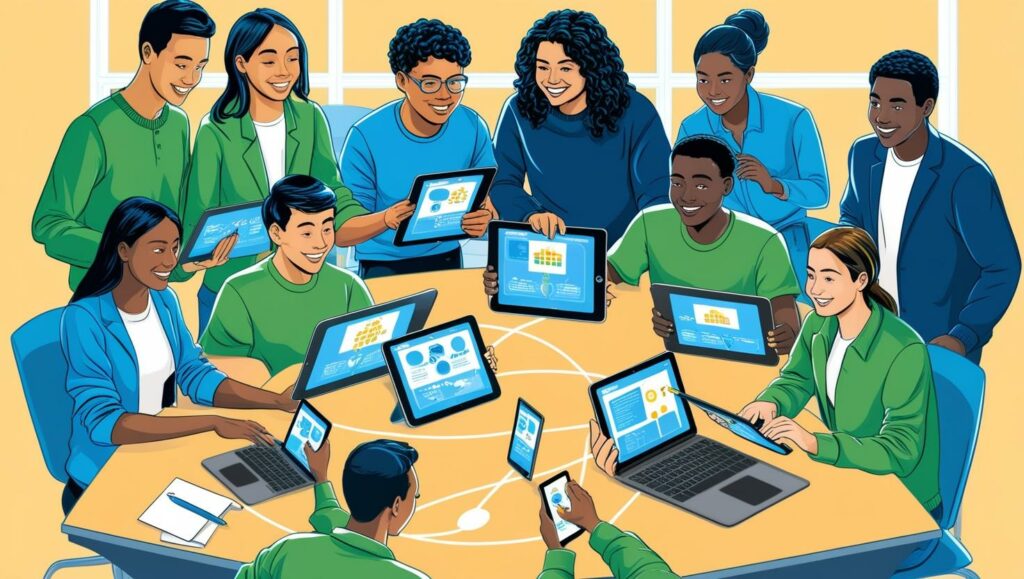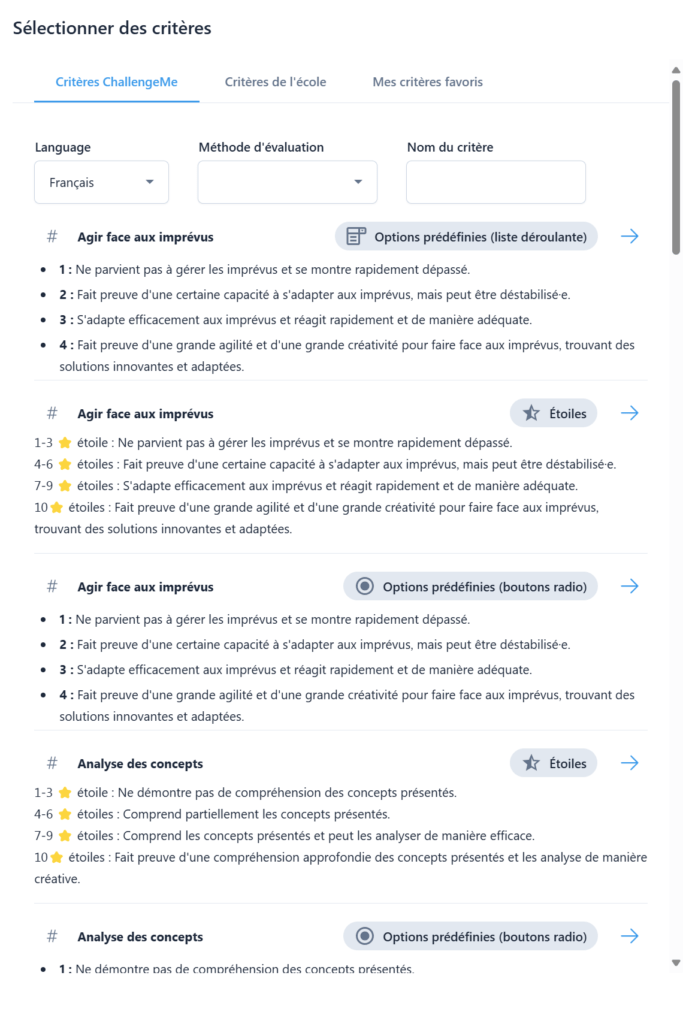Dans un monde où les compétences collaboratives sont devenues essentielles, l’apprentissage en groupe joue un rôle clé dans l’enseignement supérieur. Cette méthode permet aux étudiants de développer non seulement des compétences disciplinaires, mais aussi des compétences transversales comme la communication, le leadership et la résolution de problèmes. Cependant, la mise en place de travaux de groupe exige une préparation minutieuse pour surmonter les défis liés à la coordination et à l’évaluation.
Cet article s’appuie sur le guide « Travail de groupe en enseignement supérieur » pour explorer les avantages du travail en groupe, les obstacles à surmonter et l’impact des outils numériques dans ce processus. Chez ChallengeMe, nous avons développé une solution innovante pour transformer ces défis en opportunités. Spécialisée dans l’évaluation par les pairs, notre plateforme soutient plus de 100 établissements dans leur mission d’offrir un apprentissage de qualité tout en optimisant le potentiel des travaux collaboratifs.
Le travail en groupe repose sur une dynamique collaborative qui renforce à la fois les compétences académiques et sociales des étudiants. Selon le document « Travail de groupe en enseignement supérieur », un groupe est défini comme « la réunion d’au moins trois personnes interdépendantes qui concourent par la cohésion et les interactions mises en place à l’atteinte d’un but commun » (p. 5).
Les travaux de groupe permettent de développer deux types de compétences principales :
Avec ChallengeMe, les étudiants peuvent s’auto-évaluer et évaluer leurs pairs, ce qui les encourage à améliorer leur contribution individuelle et collective. Par exemple, l’utilisation de grilles critériées permet de structurer les attentes et d’assurer une évaluation équitable, renforçant ainsi le sentiment d’interdépendance positive entre les membres d’un groupe.

Si le travail en groupe présente de nombreux avantages, il comporte également son lot de défis. Le document souligne plusieurs obstacles courants, notamment :
Notre solution aide à surmonter ces défis grâce à des fonctionnalités adaptées :
Le recours aux outils numériques est indispensable pour gérer efficacement les travaux collaboratifs. Le document énumère plusieurs plateformes utiles, notamment Moodle et Office 365, qui permettent de coordonner les groupes et d’évaluer leurs travaux (p. 34).
Chez ChallengeMe, nous avons intégré des outils spécifiquement conçus pour améliorer l’expérience d’apprentissage collaboratif :

L’évaluation par les pairs est une pratique éducative puissante, mais elle demande une structure claire. Le document insiste sur l’importance d’une évaluation cohérente avec les objectifs pédagogiques (p. 9). Une bonne grille d’évaluation doit permettre d’éviter les biais et de motiver les étudiants.
Pour réussir une évaluation par les pairs efficace, voici quelques éléments essentiels :
L’apprentissage collaboratif est une méthode puissante pour préparer les étudiants aux exigences du monde professionnel. Toutefois, son succès repose sur une structure pédagogique solide et des outils adaptés. Chez ChallengeMe, nous sommes convaincus que l’évaluation par les pairs représente une opportunité unique pour stimuler la collaboration et l’engagement des étudiants.
En aidant les enseignants à mieux planifier, superviser et évaluer les travaux de groupe, notre solution contribue à transformer les défis de l’enseignement collaboratif en opportunités d’apprentissage enrichissantes. Pour en savoir plus, nous vous invitons à découvrir nos outils et à rejoindre une communauté d’établissements dédiés à l’excellence pédagogique.